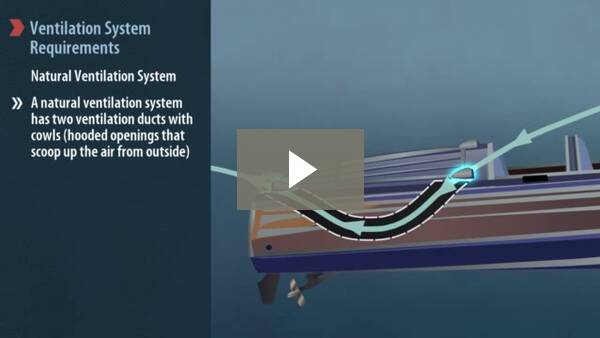Back-Fire Flame Control Devices
If your boat is gasoline-powered and has an inboard engine that was installed after April 1940, it must have a Back-Fire Flame Arrestor (BFA) mounted to each carburetor. This device will help to muffle a spark in an enclosed engine space and prevent any sparks from causing a fire. The BFA must be in good working order and be firmly attached to the air intake with a flame-tight connection. This Coast Guard requirement does not apply to boats with outboard engines.
Your Back-Fire Flame Arrestor is only valid if:
- It’s Coast Guard-approved or,
- It’s approved by SAE J-1928 (Society of Automotive Engineers Standard) or,
- It’s approved by UL 1111 (Underwriters Laboratories).
Note: Although outboard engines are not required to have a BFA, most do have a built-in form of back-fire flame control protection. For example, outboard engines often have a ‘reed-type’ carburetor attachment and PWCs use an air induction system to prevent fires.
Boat’s Back-fire Flame Control Device Maintenance
Your BFA should be cleaned and checked regularly to keep it in good working order. To clean it, remove it from the boat and wash off any gas residue with mild soap and water. Once clean, check for any visible damage. Remember to reattach the BFA correctly after you’ve cleaned it.
Ventilation System Requirements
The purpose of a ventilation system is to circulate fresh air on your boat. Ventilation will remove gas fumes from the hull and engine compartments, which will help prevent a fire or explosion from occurring. Keep in mind that ventilation ducts must be positioned above the bilge line and in the lower portion of the compartment. This is because gases are heavy and tend to accumulate near the floor.
Federal law requires any boat powered by gasoline and built after April 25th, 1940, to have a ventilation system in place.
Types of Ventilation Systems
Depending on the engine type and the year it was made, your boat will have either a natural or a powered ventilation system.
Natural Ventilation System:
- A natural ventilation system has two ventilation ducts with cowls (hooded openings that scoop up the air from outside).
Powered Ventilation System:
- All boats built later than July 31st, 1982 with an inboard engine or with installed fuel tanks, must have a powered ventilation system (which consists of one or more exhaust blowers).
Maintaining Your Boat’s Ventilation System
To maintain the ventilation system, regularly check that the vents are free of obstacles and take a close look at the device. Does any part of the system look worn or in need of being replaced? If you have a powered ventilation system, turn on the blower to check that the powered system is functioning properly.
Note: The USCG recommends that a powered ventilation system be turned on four minutes before starting your boat’s engine and for at least four minutes after you’ve fueled your boat. This will clear out any fumes that may have settled.







